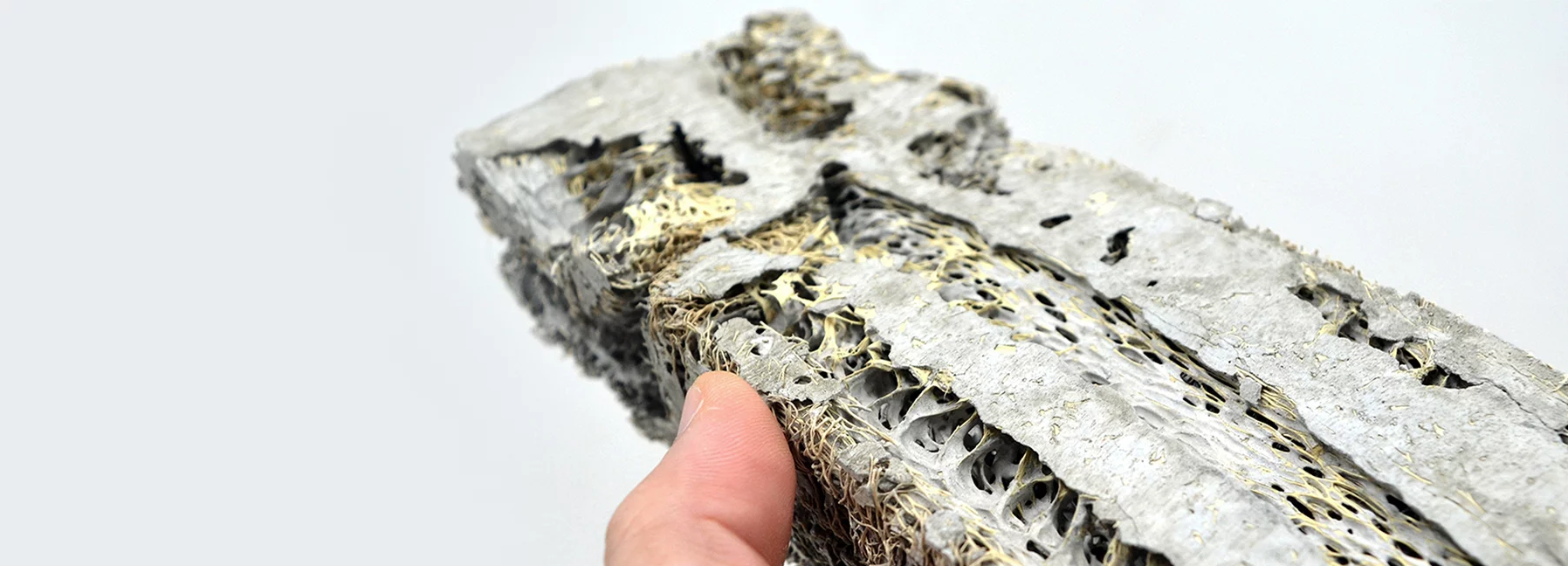Process prototype – exploration of different percentage of charcoal and concrete to test adsorption, porosity and strength of the mix (Credit: Designboom)
The green charcoal is a practice-based research by shreyas more, at the intersection of material innovation and technology that attempts to find solutions for alternative construction methods and materials.
According to an article on Bioplasticsnews.com they have developed ‘healthy’, cutting-edge materials for construction made up of charcoal, organic loofah fibers, soil and air to create a system that is biodegradable, light weight and allows the growth of living plants and insects on its surface.
The brick’s structural nature is due to the loofah’s fibrous network. the composition of this element provides strength, the appropriate flexibility and ensures a high porosity in the brick.
These loofah pores provide anchorage for plants and act as thousands of tiny water tanks reducing the temperature of the brick, therefore cooling the environment while being structural enough for construction.
Additionally, the brick’s organic undulating surfaces enable plants to grow on its surface. this gives people a closer encounter to nature in a building, creating a comforting and visual connection.
Increasing human connection to nature has been proven to make people happier, patients recover faster, students learn better, retail sales are higher and workplace productivity go up. if building facades, exterior walls and surfaces and even infrastructure throughout the city were built using green charcoal bricks, they would both clean the air and control temperature, and also create a positive impact in the behavior of passersby.
This new kind of breathing architecture ensures increased biodiversity in cities and provides healthy, alternative solutions for urban construction.
The porous materiality of the green charcoal bricks enables passive cooling, controlling a building’s interior temperatures while purifying the incoming air. this sustainable cooling method also reduces the need for air conditioning and other more polluting methods in buildings.
The green charcoal research continues to explore biophilic material compositions, climatic performance, and natural color palettes and patterns to make future cities a healthier place to live in.










